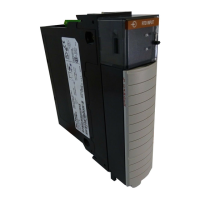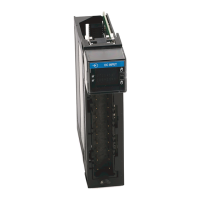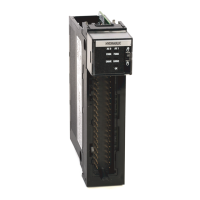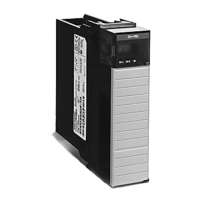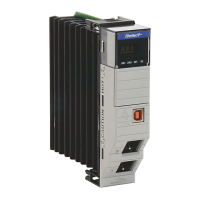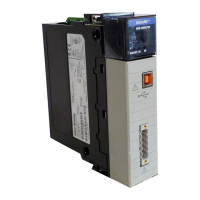186 Rockwell Automation Publication 1756-UM058G-EN-P - November 2012
Appendix B Tag Definitions
Standard and Diagnostic
Output Module Tags
ControlLogix standard and diagnostic digital output modules have three types of
tags:
• Configuration
—Structure of data sent from the controller to the I/O
module upon powerup.
•Input
—Structure of data continually sent from the I/O module to the
controller containing the current operational status of the module.
•Output
—Structure of data continually sent from the controller to the I/O
module that can modify the module behavior.
The table lists all possible standard or diagnostic output module tags. In each
application, the series of tags varies, depending on how the module is
configured.
Table 37 - Standard Output Module Configuration Tags
Name Data Type Definition
FaultMode
(1bit per point)
DINT Fault Mode—Used in conjunction with FaultValue to configure the state of outputs when a communication fault occurs.
See FaultValue.
0 = Use FaultValue (Off or On)
1 = Hold Last State
FaultValue
(1 bit per point)
DINT Fault Value—Used in conjunction with FaultMode to configure the state of outputs when a communication fault occurs.
See FaultMode.
0 = Off
1 = On
ProgMode
(1 bit per point)
DINT Program Mode—Used in conjunction with ProgValue to configure the state of outputs when the controller is in Program
mode. See ProgValue.
0 = Use ProgValue (Off or On)
1 = Hold Last State
ProgValue
(1 bit per point)
DINT Program Value—Used in conjunction with ProgMode to configure the state of outputs when the controller is in Program
mode. See ProgMode.
0 = Off
1 = On
ProgToFaultEn
(1 byte per module)
BOOL Program to Fault Transition—Diagnostic enables the transition of outputs to FaultMode if a communication failure
occurs in Program mode. Otherwise outputs will remain in Program mode. See ProgMode, ProgValue, FaultMode,
FaultValue.
0 = Outputs stay in Program mode if a communication failure occurs.
1 = Outputs go to FaultMode if a communication failure occurs.

